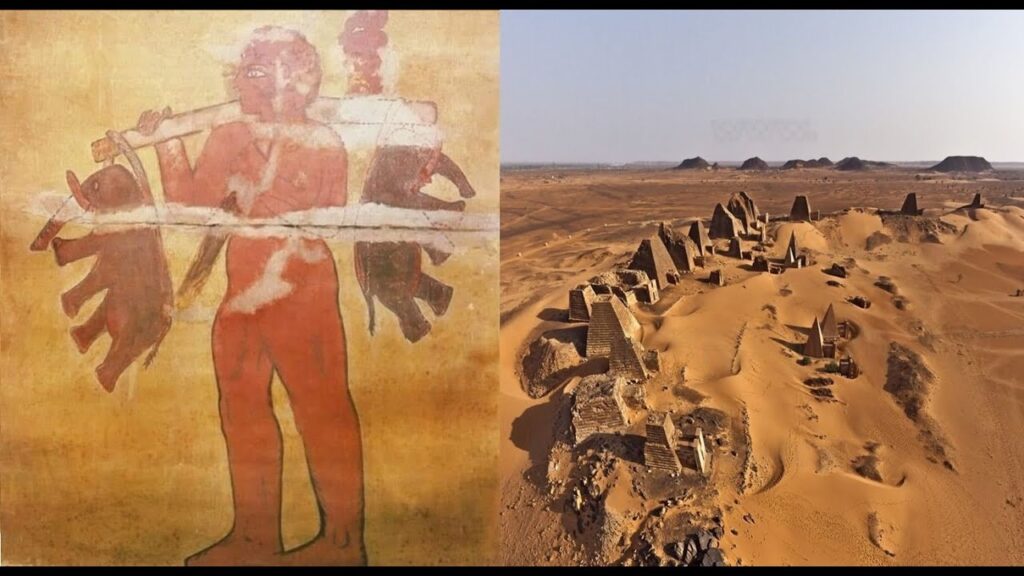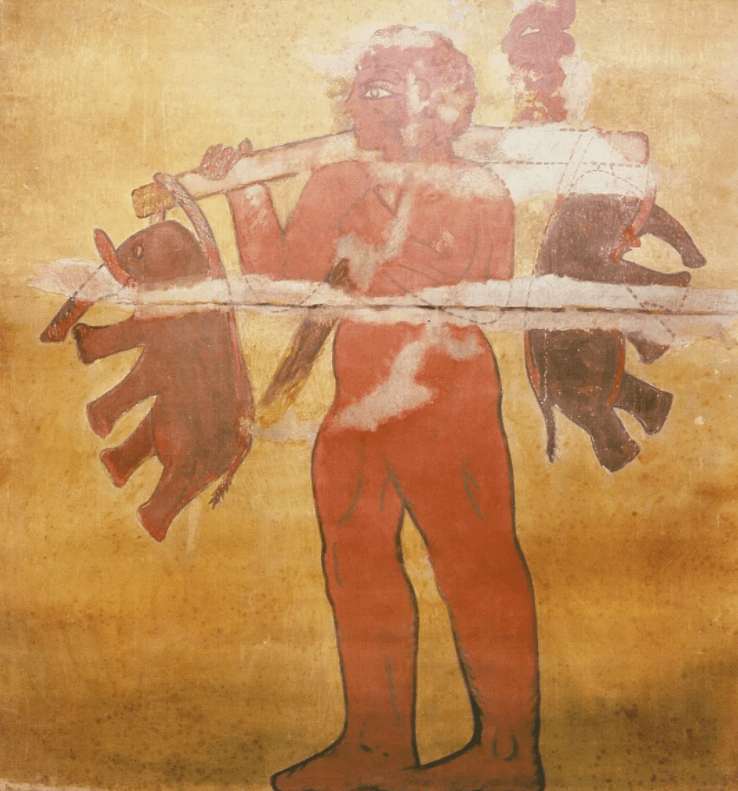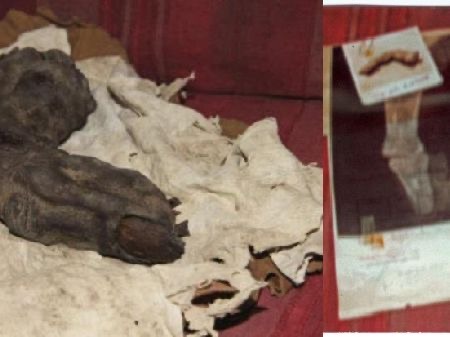Ancient Mural Paintings Of Nubian Pyramids Depict Giant Carrying Two Elephants And Giant Kings
Almost every culture that prevails around the world talks consists of ancient accounts that narrate the tales of giants living on the Earth. One more addition to such accounts is the ancient mural painting in the Nubian pyramids that portrays a ‘Giant’ carrying two elephants.

Moving north from Khartoum along a narrow desert road toward the ancient city of Meroë, one will definitely enjoy a breathtaking view emerging from beyond the mirage that is dozens of steep pyramids piercing the horizon.
However, irrespective of the number of visits one pays to this place, there is always an awed sense of discovery. Meroë is the former capital of the Kingdom of Kush, and here the road divides the city.

A royal cemetery consisting of somewhat around 50 sandstone and red brick pyramids of varying heights and broken tops is located towards the East. The royal city including the ruins of a palace, a temple, and a royal bath is located towards the West. Each structure has a distinctive architecture that draws on local, Egyptian, and Greco-Roman decorative tastes―evidence of Meroe’s global connections.
Past Associated With the City of Kush

The first civilization that was established in northern Sudan dates back 300,000 years. It is home to the oldest sub-Saharan African kingdom, the kingdom of Kush (about 2500-1500 BC). This civilization manufactured some of the most beautiful pottery in the Nile valley, including Kerma beakers.
The 200 years from the fall of Kush to the middle of the 6th century is an unknown age in Sudan. Nubia was inhabited by a people called the Nobatae by the ancient geographers and the X-Group by modern archaeologists, who are still at a loss to explain their origins.

Sudan was extremely desired for its rich natural resources particularly gold, ebony, and ivory. The British Museum collection has many objects made from the resources acquired from Sudan.
Just like every other kingdom, ancient Egyptians were also attracted to Sudan with the intention of grabbing a hold on rich natural resources. Concerning the control over trade, there were constant conflicts between the Egyptians and the Sudanese.
Around 1700 BC, the Kingdom of Kush was the strongest state in the Nile valley. The conflict between Egypt and Kush followed, culminating in the conquest of Kush by Thutmose I (1504-1492 BC). In the west and south, Neolithic cultures remained as both areas were beyond the reach of the Egyptian rulers.
City of Meroë And The Ancient Mural Painting of a Giant carrying two elephants

The city of Meroë is home to a remarkable number of pyramids, however, the majority of them are ruined. The pyramids of this city have the distinctive size and proportions of Nubian pyramids.
Meroë came into the picture and to the knowledge of Europeans in 1821 by the French mineralogist Frédéric Cailliaud (1787-1869). Numerous enigmatic and mysterious objects were discovered which included the reliefs and paintings on the walls of the sepulchral chambers. One such mysterious find was a painting that depicts a giant of enormous proportions carrying two elephants.

Though the features of the painted giant are not Nubian but caucasian and his hair is light in colour. Is this ancient mural painting proof of the existence of a race of red-haired giants with six fingers in antiquity?
Did Giants Really Live Around the Nile Valley?
Back in 79 AD, a Roman historian, Josephus Flavius put in writing that the last of the race of Egyptian giants did live in the 13th century BC, during the reign of King Joshua. It was further added by the historian that the giants had humongous bodies, and their facial features were not at all human, and their one sight was a treat to eyes.
They had a heavy, rough voice that was almost like a lion roaring.
Moreover, many of the wall paintings of ancient Egypt depict the builders of Pyramids as “Giant People” by the size of 5 to 6 meters tall.
It is believed by researchers and experts that the giants had the ability to lift 4 to 5 tons of blocks individually.

Some of those ancient mural paintings showed giant kings ruling ancient Egypt, while some depicted comparably little-sized servants under the giant people.

Gregor Spörri, a Swiss entrepreneur and a passionate admirer of the history of Ancient Egypt, met with a gang of robbers of ancient burials through one of the private suppliers in Egypt in 1988.
According to Gregor Spörri, the owner of the giant finger was a grave robber that acquired the piece while searching through an undisclosed thumb in Egypt.
When Gregor Spörri, a 56-year-old entrepreneur offered to purchase the giant finger, the owner responded: NEVER.
As per Gregor Spörri, the grave robber who discovered the finger also had a certificate of Authenticity and an X-ray image, both of which are from the 1960s.

To Conclude
The discovery of numerous ancient mural paintings in Egypt has compelled many to believe that in the distant past, the ancient Egyptians were indeed giant. They were massive in size. These giant humans of Egypt had Giant Animals and Birds as well. People of regular size like us cohabited along with these ancient Egyptian humans. Did giants once really roam on earth along with humans? Is it even possible historically and scientifically?





